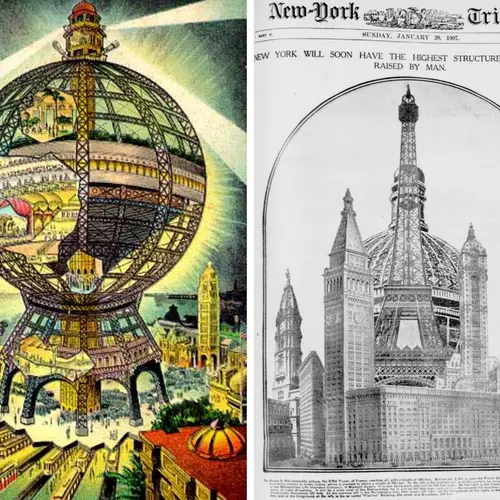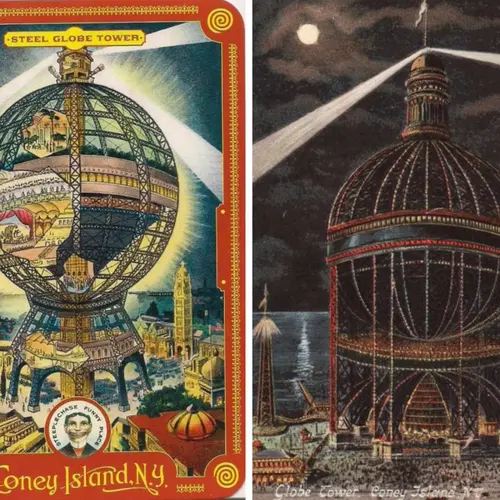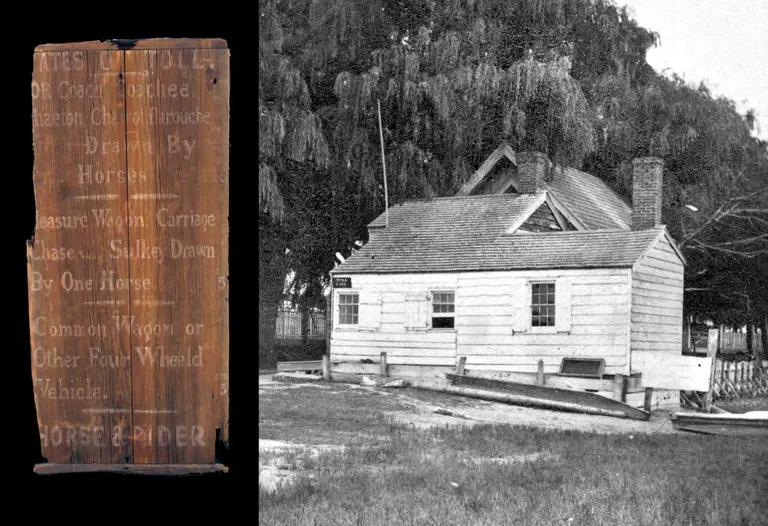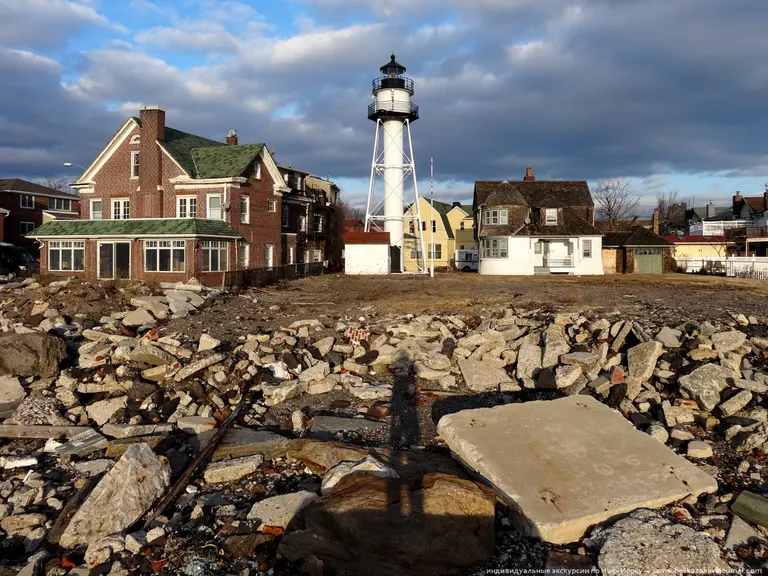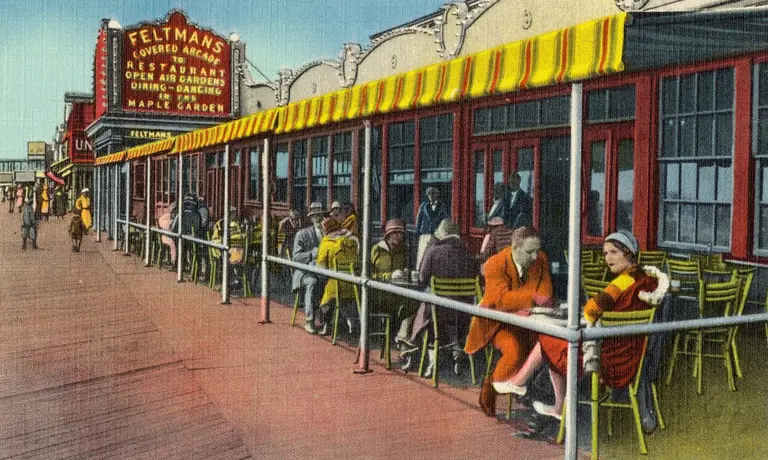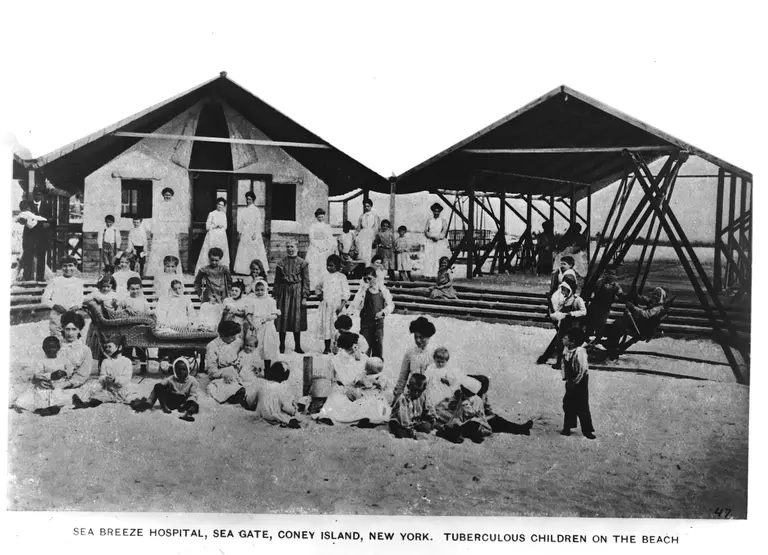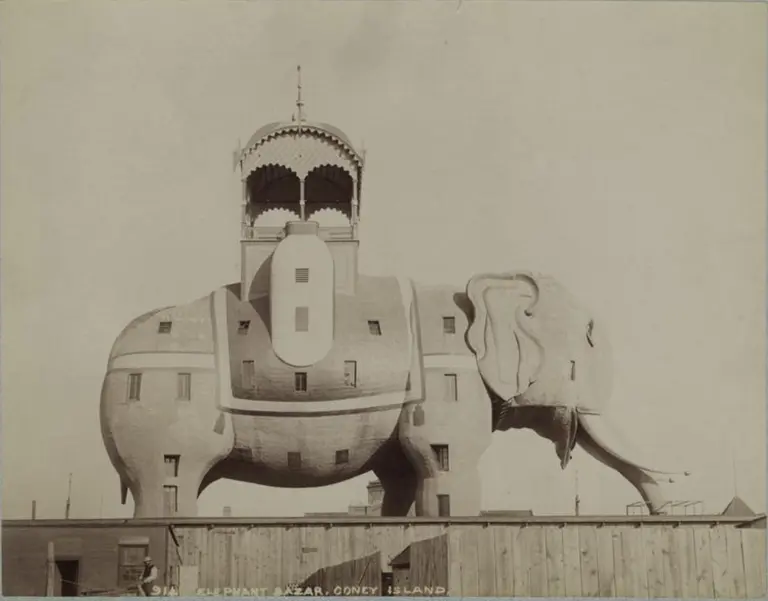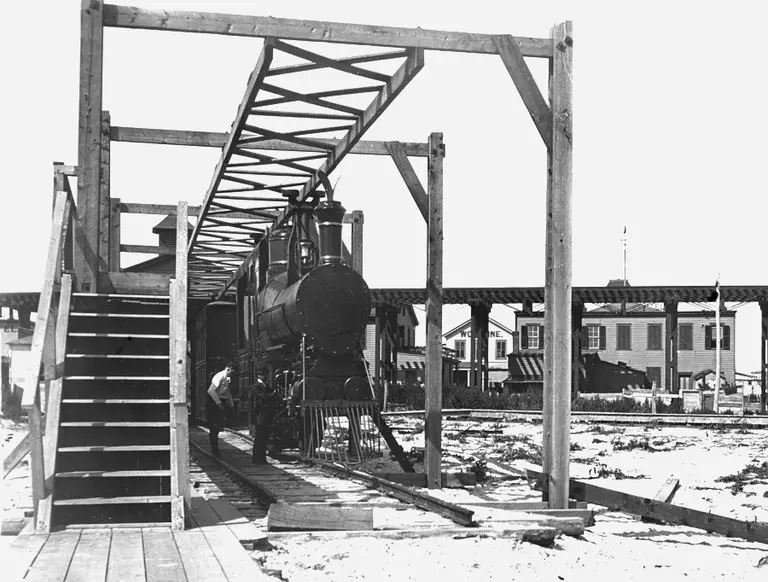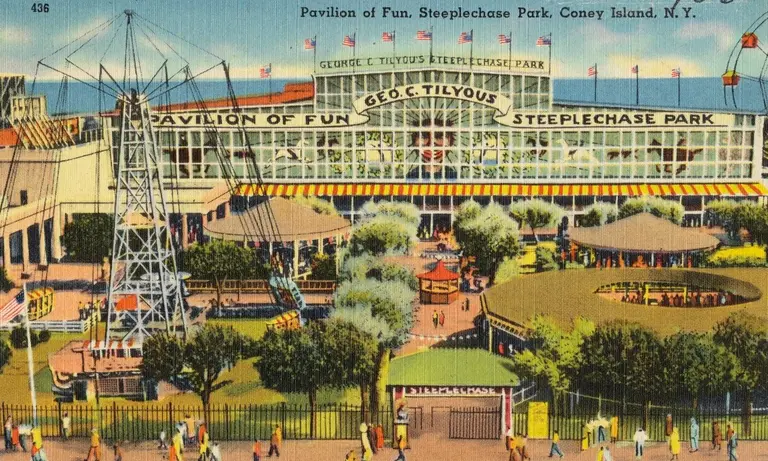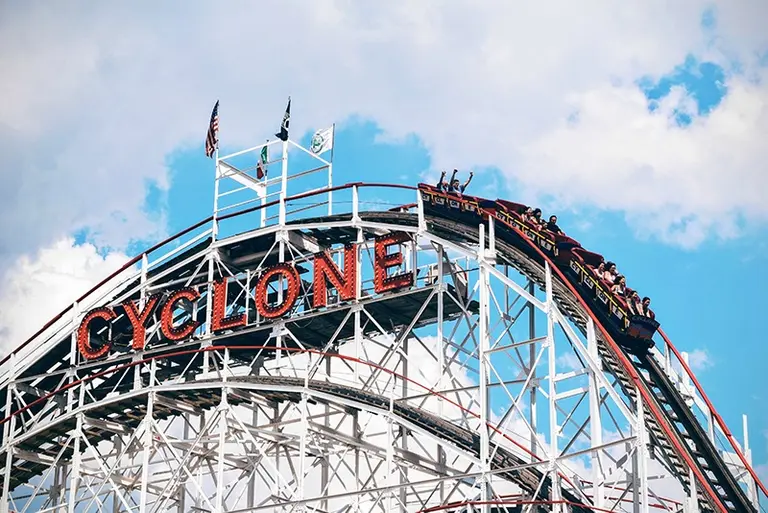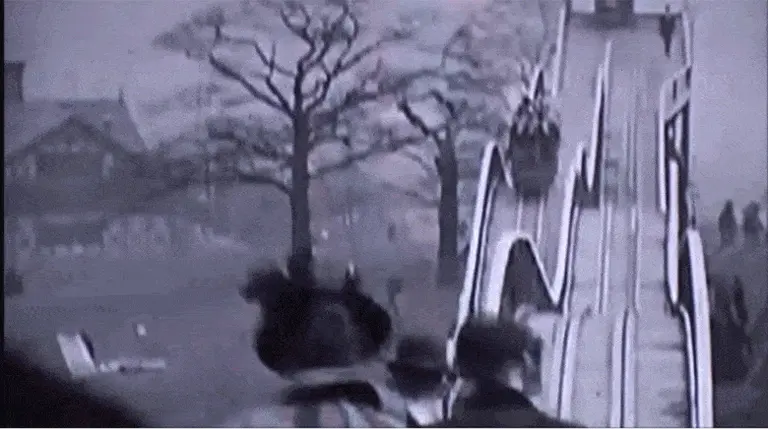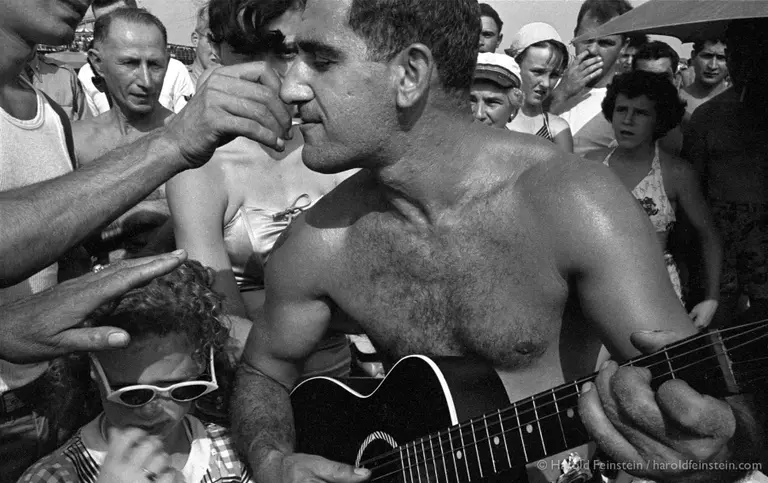Never-Built Coney Island Globe Tower Would Have Been a Massive Boardwalk in the Air
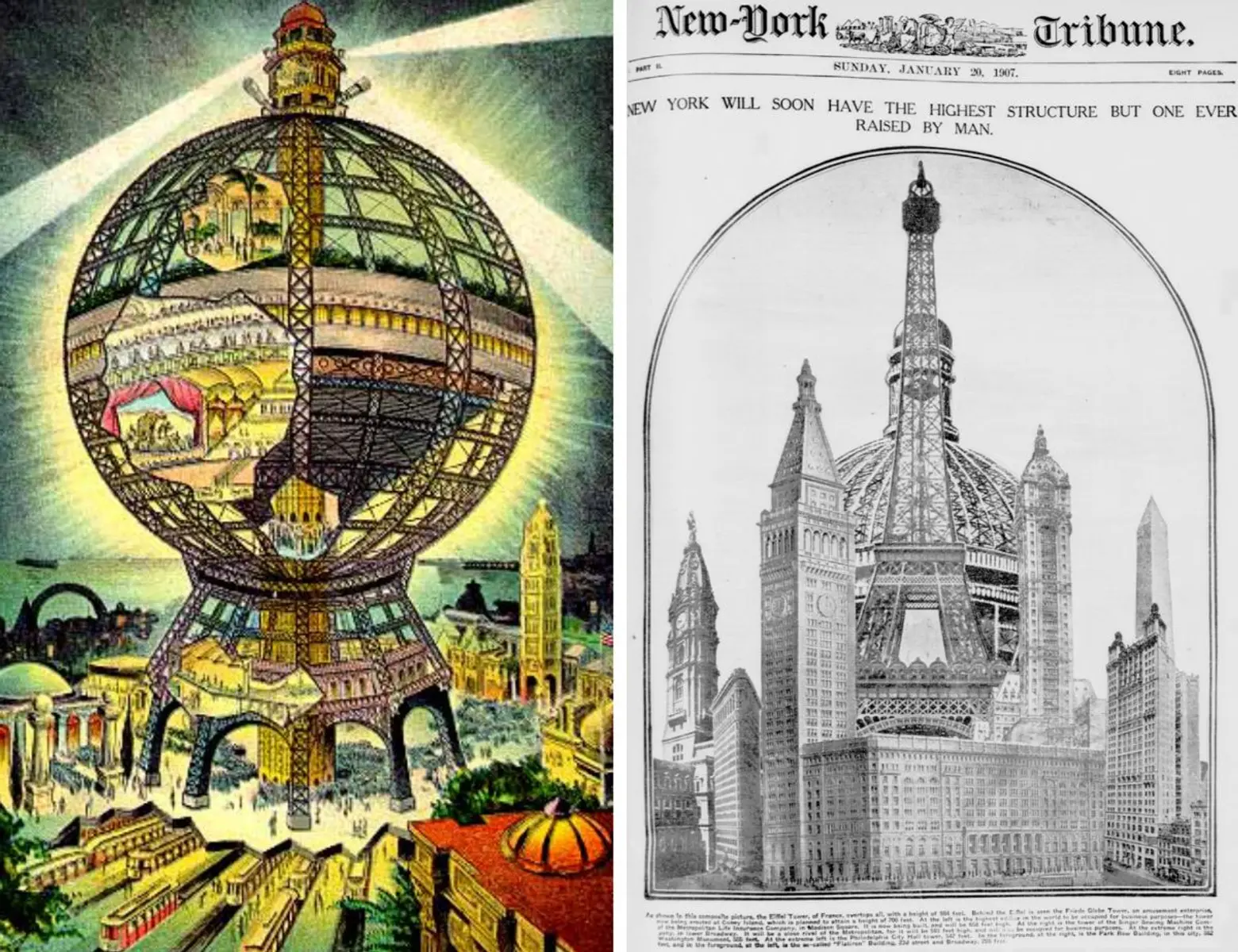
In 1906, architect Samuel Friede announced his plans to build the Coney Island Globe Tower, a 700-foot-tall, 11-story structure that would have contained the Brooklyn neighborhood’s attractions in one giant globe in the air. A New York Tribune cover revealing the project said investors were being offered “a ground floor chance to share profits in the largest steel structure ever erected…the greatest amusement enterprise in the whole world…the best real estate venture.”
Had the $1,500,000 plan gone through, the whimsical structure (part Unisphere, part Eiffel Tower) would have contained restaurants (one of which would rotate), an observatory, the United States Weather Observation Bureau and Wireless Telegraph Station, a vaudeville theater, the world’s largest ballroom, bowling alley, roller skating rink, casinos, 50,000-room hotel, 5,000-seat hippodrome, and a four large circus rings.
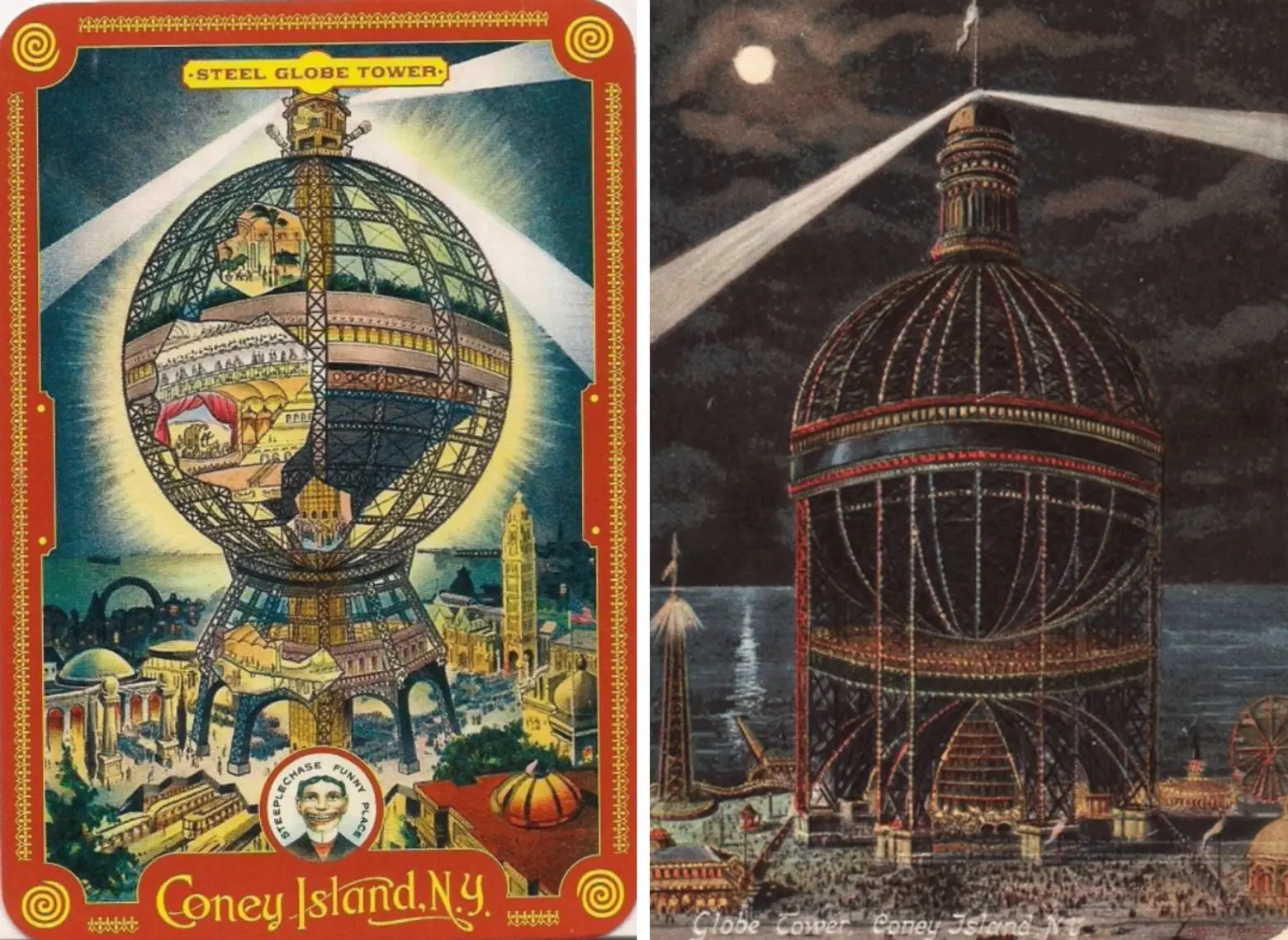
Friede planned the tower for the corner of the Steeplechase on Surf Avenue, and he even went so far as to lease the lot. He envisioned a parking garage and subway/railroad station for underneath it. There also would have been a direct connection to the ocean for boats. The giant globe was to be supported by eight pedestals that had a 35-foot foundation. The first story would start 150 feet in the air and each floor would be spaced 50 feet with amenities getting increasingly elegant and high-class the higher up one went. At its apex would be the world’s largest revolving searchlight.
Believe it or not, there was a cornerstone laying ceremony on May 26, 1906 that featured speeches, concerts, and fireworks. Investors quickly rushed in, but when the foundations still were incomplete at the end of the summer, they became nervous. Despite their fears, another exuberant ceremony took place on February 17, 1907 to mark the first piece of steel going into position. According to Jeffrey Stanton, “The company claimed they were driving 800 concrete foundation piles, each 30 feet long and five feet in circumference. They promised that half of the eleven floor structure would be open to the public on May 15th and the remainder would be fully operational the following year.” But in March, George Tilyou, creator and owner of the Steeplechase, threatened an injunction. It was stopped by a Brooklyn Supreme Court judge, but by 1908 the veil was lifted on perhaps the largest architectural fraud, and Tilyou was tasked with removing the 30 foundation piles from his property.
RELATED:
